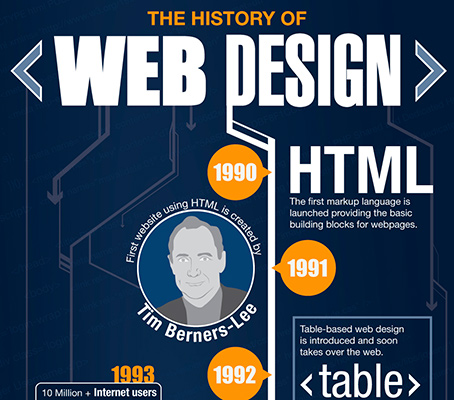In the past, sites were simple and concentrated on information. Navigation was straight, and style was for desktop computers. Now, individual experience is vital. Information overviews layouts for simple navigating. Responsive layouts fit different devices. Today, dark setting lowers strain, and minimalist food selections boost navigating. Interactive features involve individuals, and bold visuals stick out. AI integration increases engagement. See just how style has advanced to improve your online trip.
Very Early Days of Website Design
In the early days of web design, simpleness preponderated. content creator sites were standard, with restricted colors, fonts, and designs. The emphasis got on giving details rather than showy visuals. search engine optimization optimization accessed the web with slow dial-up connections, so rate and performance were key.
Navigating menus were straightforward, typically located at the top or side of the web page. Internet sites were developed for home computer, as mobile surfing had not been yet widespread. Web content was king, and developers prioritized very easy readability over complex design elements.
HTML was the key coding language used, and developers had to work within its restrictions. Read the Full Posting and interactive functions were very little compared to today's criteria. Internet sites were static, with little vibrant web content or customized user experiences.
Increase of User-Focused Layout
With the advancement of site layout, a change in the direction of user-focused layout principles has actually ended up being progressively prominent. Today, creating sites that prioritize user experience is important for engaging site visitors and accomplishing business goals. User-focused design involves recognizing the requirements, choices, and actions of your target audience to customize the internet site's format, content, and features accordingly.
Developers currently perform complete research, such as customer surveys and functionality testing, to collect insights and responses directly from users. This data-driven method aids in developing user-friendly navigation, clear calls-to-action, and visually appealing interfaces that reverberate with site visitors. By positioning the customer at the facility of the layout procedure, web sites can deliver a much more individualized and delightful experience.
Responsive style has actually likewise emerged as a vital aspect of user-focused design, making sure that websites are enhanced for numerous gadgets and screen dimensions. This flexibility improves access and usability, satisfying the varied methods users connect with web sites today. In essence, the surge of user-focused style signifies a change in the direction of producing digital experiences that prioritize the requirements and assumptions of completion customer.
Modern Trends in Website Design
Discover the most up to date patterns shaping web design today. One famous trend is dark mode design, using a sleek and modern appearance while minimizing eye pressure in low-light atmospheres. One more vital pattern is minimal navigation, simplifying food selections and improving individual experience by concentrating on essential elements. Integrating micro-interactions, such as computer animated switches or scrolling effects, can produce a much more appealing and interactive web site. Responsive style continues to be important, guaranteeing seamless customer experiences across various tools. In addition, using strong typography and unbalanced designs can include aesthetic interest and draw attention to particular web content.
Incorporating AI modern technology, like chatbots for client support or personalized referrals, boosts customer involvement and enhances processes. Availability has likewise end up being a significant fad, with designers focusing on comprehensive style techniques to deal with varied user demands. Accepting sustainability by optimizing website efficiency for speed and performance is another emerging trend in web design. Teaming up with user comments and information analytics to iterate and enhance style constantly is crucial for remaining relevant in the ever-evolving electronic landscape. By welcoming these modern fads, you can produce a visually enticing, user-friendly web site that reverberates with your target market.
Verdict
As you reflect on the advancement of website style from the early days to now, you can see how user-focused design has actually ended up being the driving force behind modern patterns.
Embrace the journey of modification and adjustment in web design, constantly keeping the individual experience at the forefront.
Stay present with the most up to date trends and modern technologies, and never ever stop progressing your approach to produce visually spectacular and easy to use sites.
Evolve, adapt, and create - the future of web design remains in your hands.
